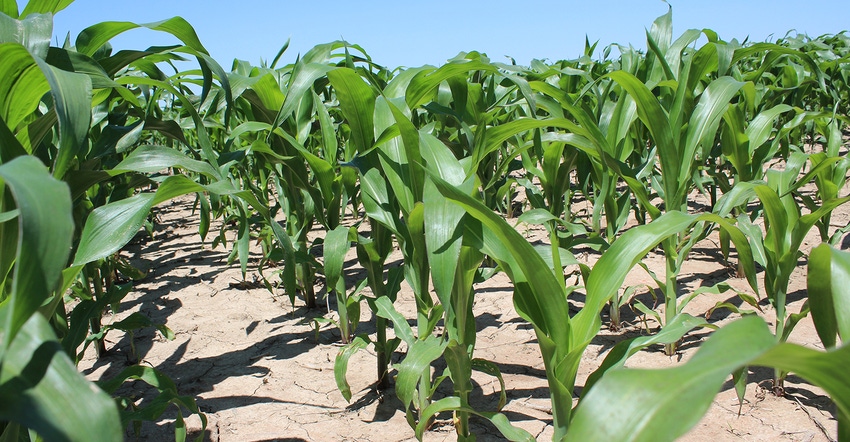
Working out of his office near Hannibal, Shane Albertson sifts through piles of crop insurance documents. He will then share his findings with farmers and ranchers in a conference room, local diner or on the farm. Ultimately, his goal is to make sure that farmers are able to use the programs to insure their operations against potential risk.

Shane Albertson, crop insurance team leader, FCS Financial

As a crop insurance team leader for FCS Financial, Albertson reminds farmers that they need to work with their crop insurance agent to protect their financial position as best as possible. And there are a few changes they should be aware of for 2017. Below are six major modifications to the federal crop insurance program that may impact your operation.
Corn transitional yield (T-yield). A T-yield or variable T-yield is used for those operations that do not have more than four years of actual production history data (APH). "We had changes for some counties on corn and grain sorghum," Albertson notes. Farmers adding land into an operation, or beginning farmers, may see the greatest impact. He uses Adair County as an example. Last year the T-yield was 131 bushels for corn; this year, it lowered to 118 bushels. "If this was a new producer, it could have a significant impact on guarantees per acre."
Irrigation T-yields. In some Missouri counties, there was no difference in T-yields from irrigated corn to nonirrigated corn ground. Albertson says that the program T-yields for some counties changed to differentiate between the two types of practices. For example, a farmer near Hannibal may have installed a new center-pivot system on some ground. "We cannot use dryland production history because it was not irrigated," Albertson notes. "We have to reset back to irrigated T-yield for that practice." He says in this case, while last year the T-yield for the irrigated practices was 138, this year the irrigated T-yield increased to 152 bushels.
High-risk ground ratings. The high-risk ground ratings changed for some counties in Missouri, primarily along the Missouri River. The USDA Risk Management Agency did a large-scale review of the high-risk classification for 34 counties in Kansas, Missouri and Nebraska. The results showed net decreases on premium rates for the area — corn at 8% and soybeans at 11%. For Missouri, 25 counties along the river were reviewed; some areas saw increases, while others saw decreases. "Some ground may have been added or removed from high risk," Albertson says. "If you farm along the Missouri River or its tributaries, you need to talk with your crop insurance agent to discuss any changes."
Prevent-plant coverage. Prevent-plant coverage for corn and rice in Missouri is changing in 2017 (for qualifying policies), and Albertson says this adjustment has the "potential to impact many producers if a prevent-plant situation exists in 2017." Corn prevent-plant percent guarantee will go down from last year's 60% to 55% this year. Rice percent of prevent-plant guarantee will go up to 55%. Albertson adds that the "corn prevent-plant buy-up option is still available in many counties to increase prevent-plant percentage 5% or 10% above the standard 55%."
Revised replant definition. In the past, the insurance company had some discretion for how long a farmer needed to keep trying to replant a crop. "Now, the producer has to try to replant the entire time during the late-plant period," Albertson explains. Beginning in 2017, RMA considers it practical to replant through the end of the late-plant period of the insurable crop unless it is determined to be physically impossible to replant the acreage, or there is no chance of seed germination, emergence and formation of a healthy plant.
Enterprise units added to HR-ACE. High-risk alternative coverage endorsement (HR-ACE) allows farmers to insure high-risk acres separately from standard rate acres at a lower coverage level. In 2016, the HR-ACE was only available with optional or basic units. This year the program allows for HR-ACE policyholders to use enterprise units. Qualifications of standard-rate ground and high-risk ground must individually meet the 20/20 rule for qualification, according to Albertson. Albertson says HR-ACE on enterprise units is one way to lower the cost of insurance, but farmers might be giving up more individualized coverage by switching to it.
With all of the changes to the 2017 federal crop insurance program, Albertson encourages farmers to meet with their agent to determine the best way to mitigate risk by insuring crops.
About the Author(s)
You May Also Like






